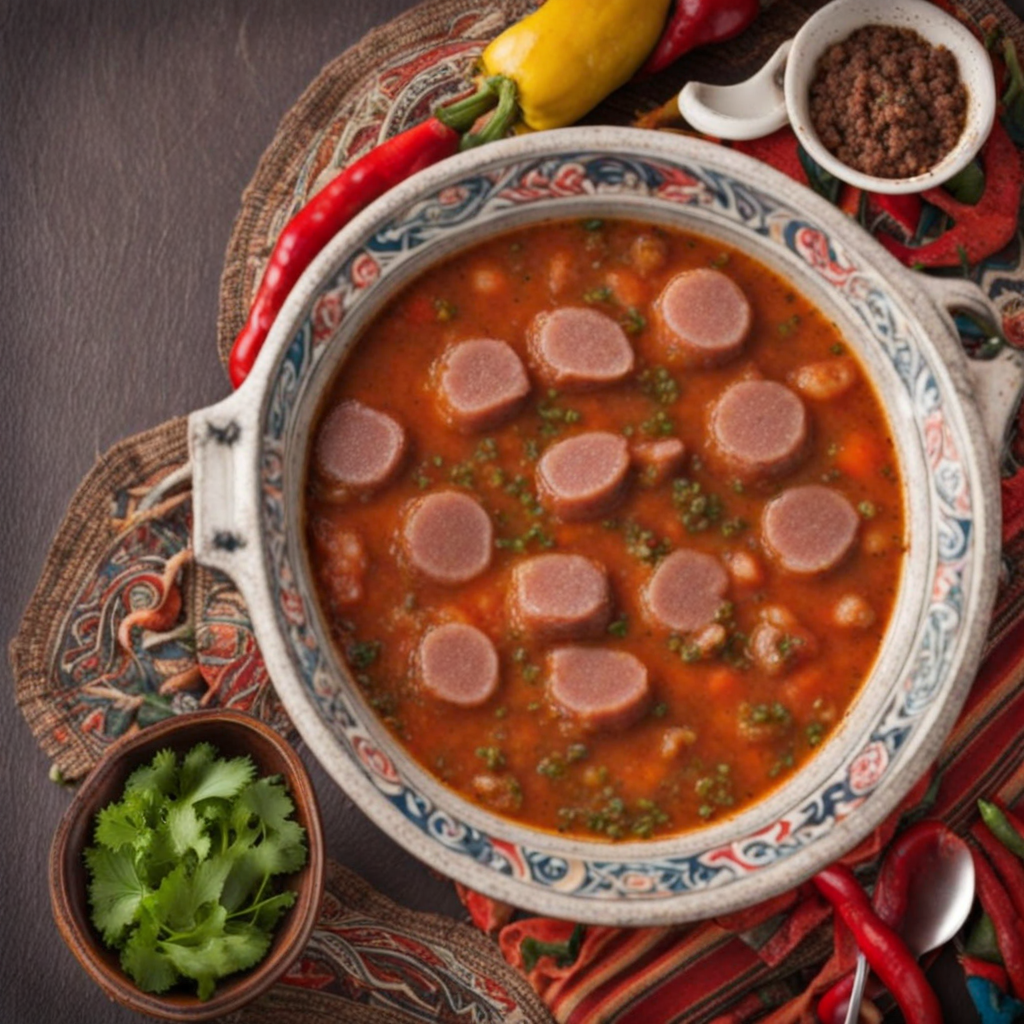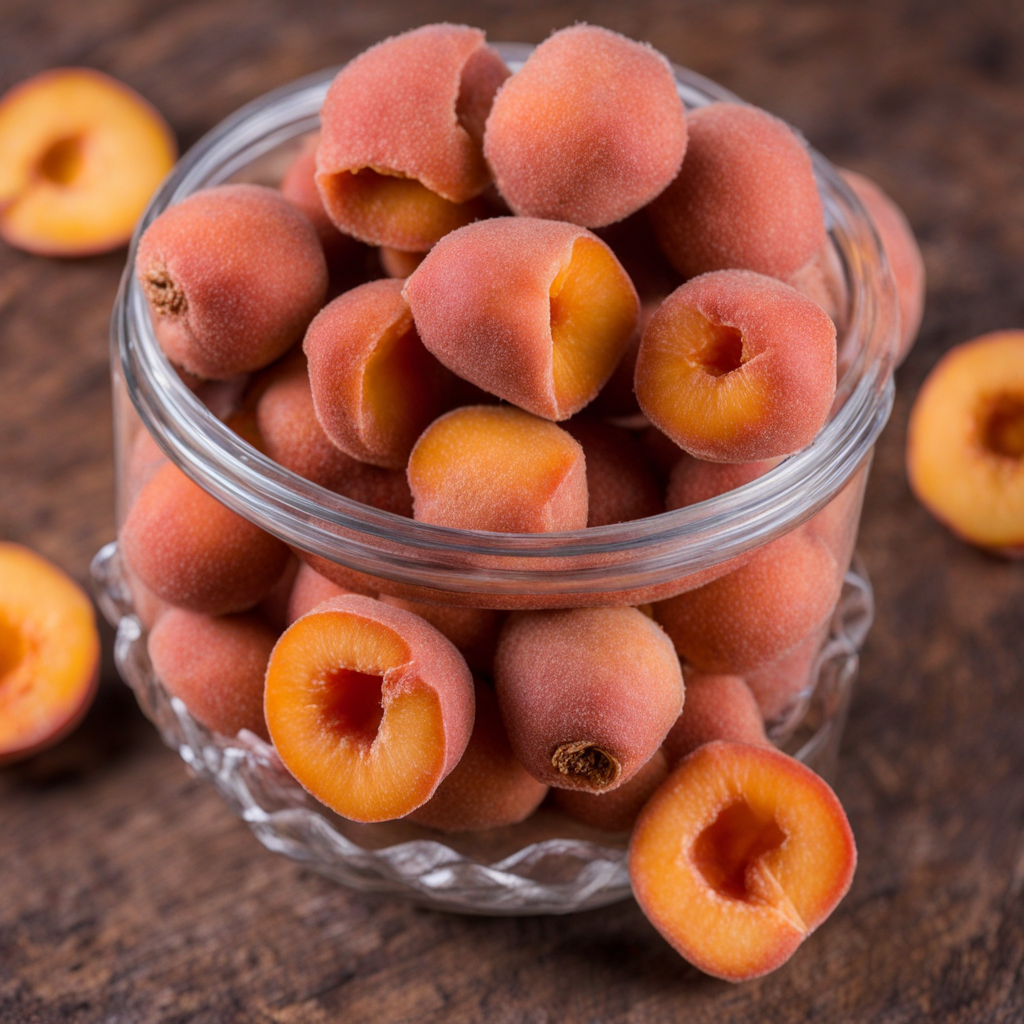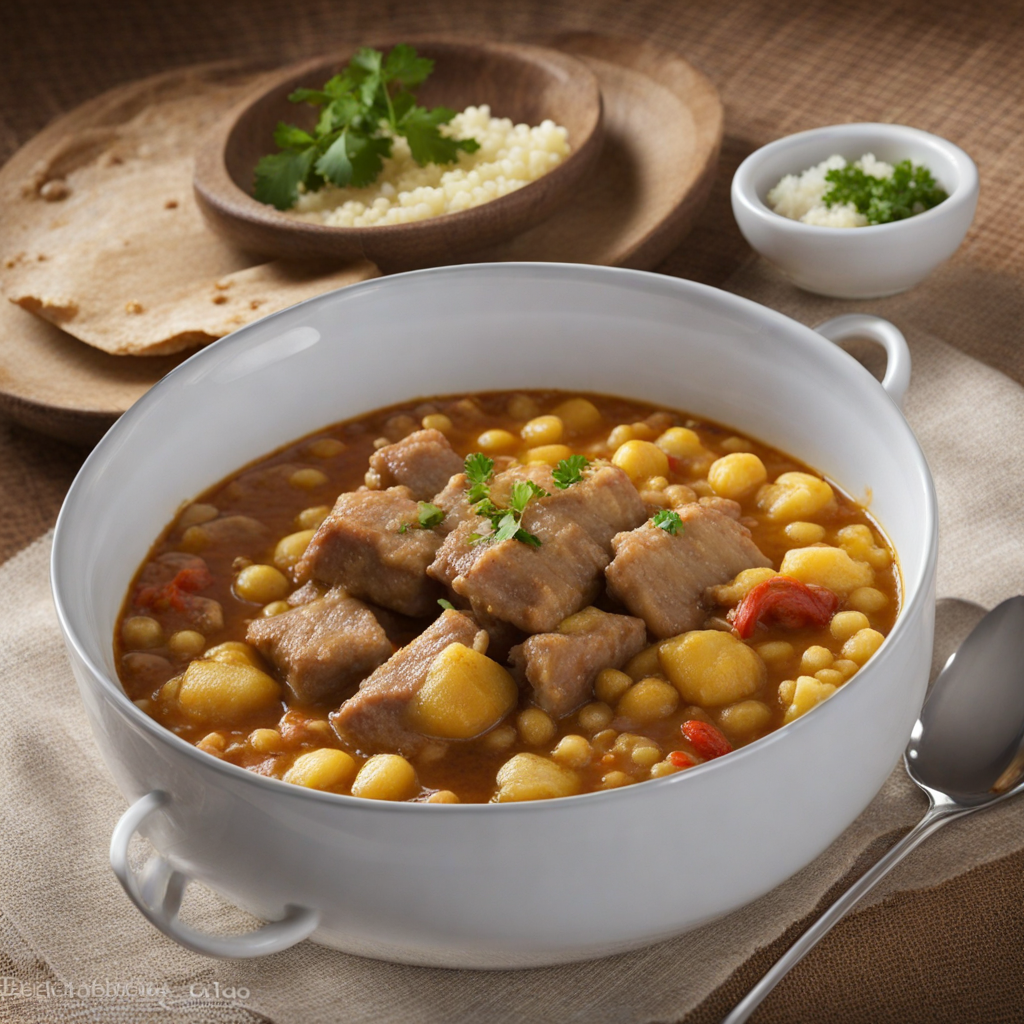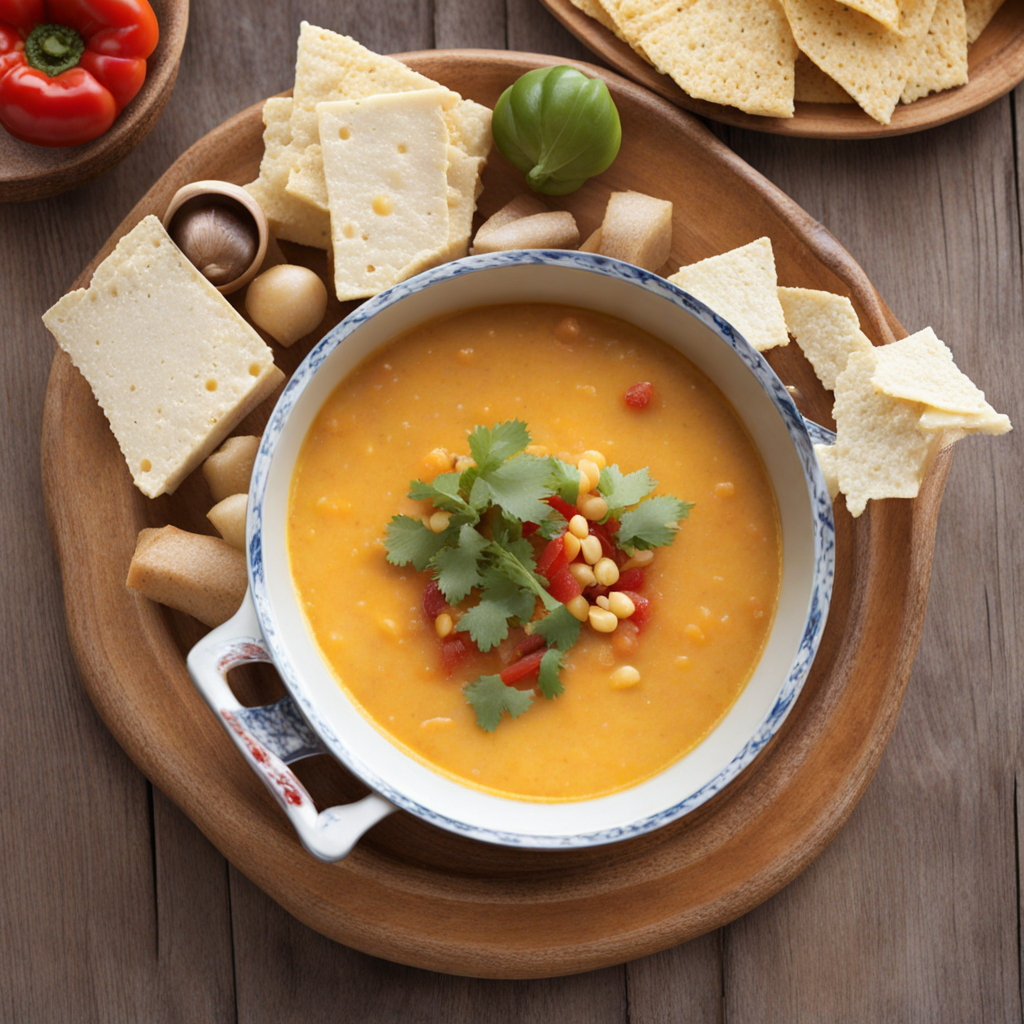Ají de Lengua
Ají de Lengua is a traditional Bolivian dish that offers a delightful combination of flavors and textures, making it a must-try for adventurous food lovers. The star of the dish is the tender beef tongue, which is slow-cooked until it reaches a melt-in-your-mouth consistency. The meat is then sliced and served with a rich and spicy ají sauce, made from a blend of fresh ingredients such as roasted peppers, garlic, and onions. This sauce provides a perfect balance of heat and depth, elevating the dish to new heights while preserving the unique flavor of the tongue. Accompanying the Ají de Lengua is a side of fluffy white rice, which serves as a neutral base to absorb the vibrant sauce. Often, it is paired with boiled potatoes or yucca, adding additional heartiness to the meal. The dish is garnished with fresh herbs, such as cilantro or parsley, which contribute a refreshing touch and brighten the overall presentation. This combination of ingredients not only showcases the culinary traditions of Bolivia but also highlights the importance of communal dining, as it is often served in a large platter for sharing. The experience of tasting Ají de Lengua is a journey through the rich culinary landscape of Bolivia. Each bite offers a wonderful interplay of flavors—the smoky notes from the ají sauce, the savory essence of the beef tongue, and the comforting starchiness of the sides. It is a dish that invites exploration, celebrating the use of local ingredients while honoring the cultural heritage of Bolivian cuisine. Whether you're a seasoned connoisseur or a curious newcomer, Ají de Lengua promises to deliver a memorable and satisfying culinary adventure.
How It Became This Dish
The History of Ají de Lengua: A Bolivian Culinary Delight Ají de Lengua, a beloved dish in Bolivia, is a rich and flavorful preparation that showcases the country’s culinary heritage, blending indigenous ingredients with Spanish influences. This hearty dish, featuring beef tongue cooked in a vibrant ají sauce, not only reflects the complex history of Bolivia but also highlights the cultural significance of food in the nation’s identity. #### Origins: Indigenous Roots and Spanish Influence The origins of Ají de Lengua can be traced back to the rich tapestry of Bolivia’s history and the diverse cultural influences that have shaped its cuisine. Indigenous peoples, particularly the Aymara and Quechua, have long relied on local ingredients such as potatoes, corn, and a variety of peppers, known as ají, to create flavorful dishes. The word “ají” itself derives from the Taíno word for hot pepper, emphasizing its significance in pre-Columbian food culture. With the arrival of the Spanish in the 16th century, new ingredients and culinary techniques were introduced to the indigenous diet. The Spanish brought with them livestock, including cattle, which became a staple in the Andean diet. The introduction of beef tongue as a culinary ingredient exemplifies this fusion of cultures. While many parts of the cow were consumed, the tongue was often considered a delicacy, prized for its tenderness and flavor. Ají de Lengua likely originated as a way to elevate this cut of meat, utilizing the bold flavors of ají, onions, and spices. Over time, the dish became a staple in Bolivian households, particularly among the mestizo population, who blended indigenous cooking techniques with Spanish culinary practices. #### Cultural Significance In Bolivia, food is more than just sustenance; it is a reflection of the nation’s identity and cultural heritage. Ají de Lengua holds a special place in Bolivian cuisine, often served during festive occasions, family gatherings, and celebrations. Its preparation is a communal activity, bringing families together to share in the cooking process and enjoy the fruits of their labor. The dish is particularly popular in the highlands, where the cold climate calls for hearty fare. It is often served with a side of rice and potatoes, staples in Bolivian diets, and is sometimes accompanied by a fresh salad. The vibrant colors of the ají sauce, often made with yellow ají peppers, tomatoes, and herbs, reflect the nation’s rich agricultural landscape. Ají de Lengua is also emblematic of the Bolivian spirit of resilience and adaptability. The use of tongue, once considered a less desirable cut of meat, speaks to the resourcefulness of Bolivian cooks who transform humble ingredients into a dish fit for celebration. This culinary tradition underscores the importance of community, as families gather to prepare and enjoy the meal together, fostering a sense of belonging and continuity. #### Development Over Time As Bolivian society has evolved, so too has the preparation and presentation of Ají de Lengua. Traditionally, the dish was made with locally sourced ingredients, and recipes would vary from region to region, reflecting local tastes and available produce. In urban areas, particularly in cities like La Paz and Cochabamba, Ají de Lengua has become a popular item on restaurant menus, often served in a more refined manner. Modern interpretations of Ají de Lengua have emerged, incorporating contemporary cooking techniques and flavors while still respecting the dish’s traditional roots. Chefs are experimenting with different types of ají peppers, introducing new flavor profiles that appeal to a younger, more globalized audience. This evolution reflects a broader trend in Bolivian cuisine, where chefs are increasingly drawing on their cultural heritage while also embracing innovation. The rise of gastronomy in Bolivia has also led to a renewed interest in traditional dishes like Ají de Lengua. Food festivals and culinary competitions have provided platforms for chefs to showcase their skills and celebrate Bolivian cuisine. This has sparked a growing movement to preserve traditional recipes and promote local ingredients, ensuring that Ají de Lengua remains a cherished part of Bolivia’s culinary landscape. Furthermore, the dish's presence on social media platforms has contributed to its popularity among younger generations. Food enthusiasts share pictures and recipes, encouraging home cooks to explore and experiment with traditional dishes. This digital age has allowed Ají de Lengua to reach a wider audience, both within Bolivia and internationally, as people seek to understand and appreciate the complexities of Bolivian cuisine. #### Conclusion: A Culinary Legacy Ají de Lengua is more than just a dish; it is a representation of Bolivia’s rich culinary heritage and a testament to the country’s diverse cultural influences. Its origins reflect the blending of indigenous and Spanish traditions, while its evolution showcases the adaptability and creativity of Bolivian cooks. As this dish continues to be celebrated in homes and restaurants alike, it serves as a reminder of the importance of food in connecting people to their history and to one another. In a world that is increasingly globalized, Ají de Lengua stands as a symbol of Bolivia’s unique identity, inviting everyone to savor its rich flavors and appreciate the stories that each bite tells. It is a dish that not only nourishes the body but also feeds the soul, embodying the resilience, community, and cultural pride that define Bolivian society. As long as there are families gathering around the table to share a meal, the legacy of Ají de Lengua will endure, continuing to warm hearts and bring people together for generations to come.
You may like
Discover local flavors from Bolivia







